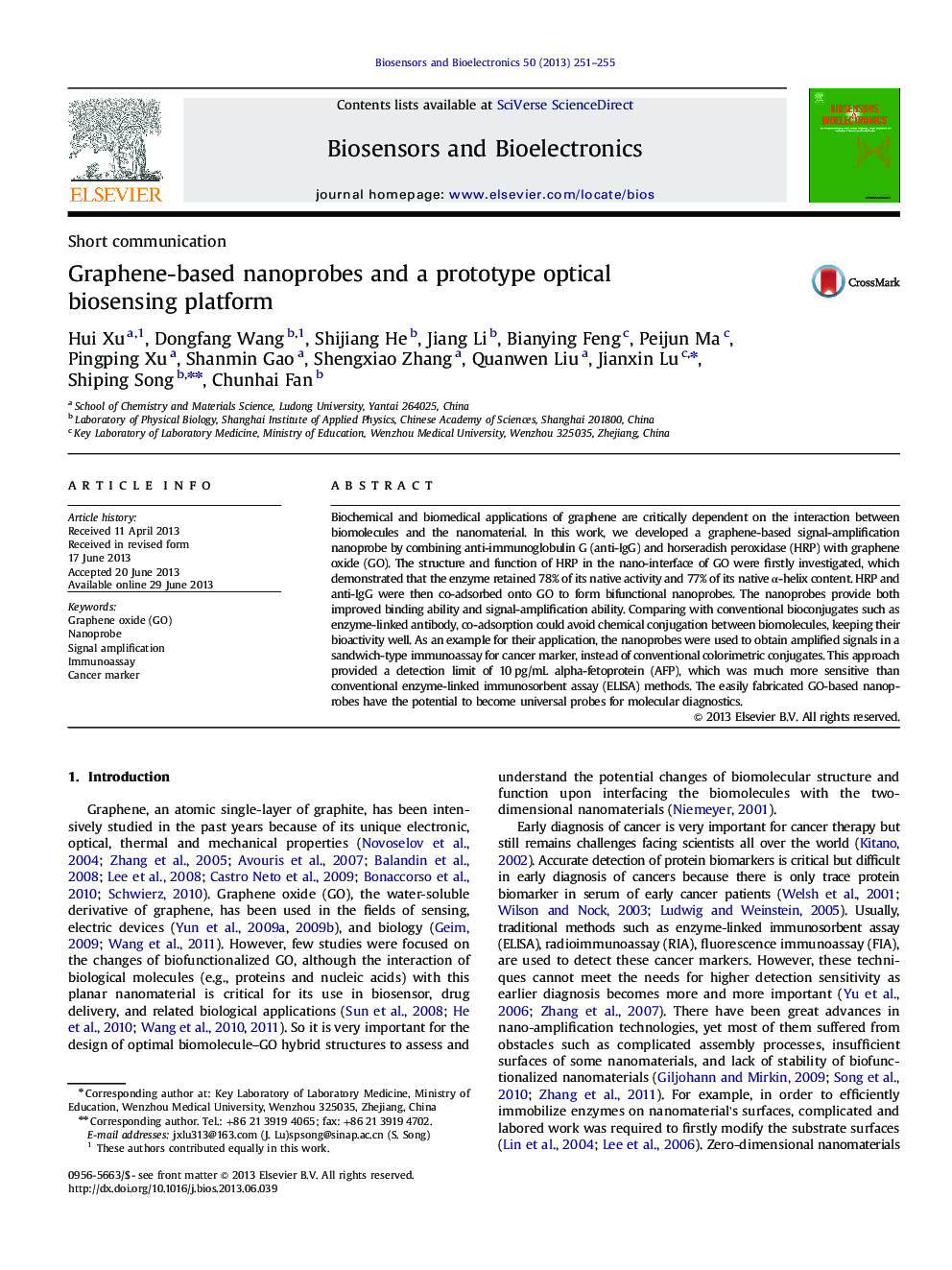| Article ID | Journal | Published Year | Pages | File Type |
|---|---|---|---|---|
| 7234157 | Biosensors and Bioelectronics | 2013 | 5 Pages |
Abstract
Biochemical and biomedical applications of graphene are critically dependent on the interaction between biomolecules and the nanomaterial. In this work, we developed a graphene-based signal-amplification nanoprobe by combining anti-immunoglobulin G (anti-IgG) and horseradish peroxidase (HRP) with graphene oxide (GO). The structure and function of HRP in the nano-interface of GO were firstly investigated, which demonstrated that the enzyme retained 78% of its native activity and 77% of its native α-helix content. HRP and anti-IgG were then co-adsorbed onto GO to form bifunctional nanoprobes. The nanoprobes provide both improved binding ability and signal-amplification ability. Comparing with conventional bioconjugates such as enzyme-linked antibody, co-adsorption could avoid chemical conjugation between biomolecules, keeping their bioactivity well. As an example for their application, the nanoprobes were used to obtain amplified signals in a sandwich-type immunoassay for cancer marker, instead of conventional colorimetric conjugates. This approach provided a detection limit of 10 pg/mL alpha-fetoprotein (AFP), which was much more sensitive than conventional enzyme-linked immunosorbent assay (ELISA) methods. The easily fabricated GO-based nanoprobes have the potential to become universal probes for molecular diagnostics.
Related Topics
Physical Sciences and Engineering
Chemistry
Analytical Chemistry
Authors
Hui Xu, Dongfang Wang, Shijiang He, Jiang Li, Bianying Feng, Peijun Ma, Pingping Xu, Shanmin Gao, Shengxiao Zhang, Quanwen Liu, Jianxin Lu, Shiping Song, Chunhai Fan,
